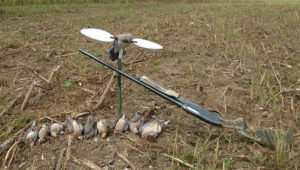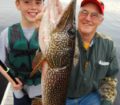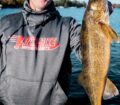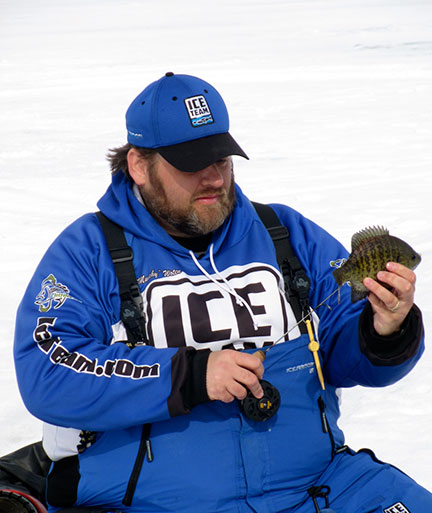By Steve Weisman
It’s nearly mid-August, and our hunting seasons are quickly approaching. One of the first comes on September 1 with the mourning dove season. Since the dove season was established in 2011, it has become an extremely popular early hunting season for Iowa hunters with over 10,000 hunters harvesting doves annually.
What’s nice about dove hunting is that ample numbers of birds are located across the state. Although it will probably be warm and most likely humid, it’s really a pretty easy hunt.
You don’t need a lot of equipment. Just you, your shotgun, a lot of shells, a bucket to sit on and to carry out the bagged doves and a spot that has doves using the area you plan on hunting. When I say lots of shells, that’s exactly what I mean. It seems there is never an easy straight away shot!
This can also be a good tune-up for your hunting dog. Just make sure to have plenty of water for you and your dog. Oh, and don’t forget the bug spray! If it’s really warm and sunny, you might want some sunscreen, too.
In the next two weeks
Scout! That one word can tip the odds in your favor. Get out and see where the doves are located. Even though they are pretty much anywhere, concentrations of doves occur based on certain key factors. Check spots both early morning and early evening and try to figure out the flight pattern.
Mourning doves like feeding on open ground, eating a variety of seeds and grains. As a result, several DNR wildlife areas in each county have food plots that have been planted to attract doves. Portions of these food plots will be cut down/disked a few days prior to the season to help attract doves to the area. The Iowa DNR has a list of public wildlife areas and private land enrolled in Iowa Habitat Access Program (IHAP) where dove plots have been added.
Just google dove hunting food plots in Iowa, and you will be taken to the DNR website that gives food plots by county. For instance, here are the public areas in the three counties close to where I hunt, In Clay County, there is Dewey’s Pasture, Fen Valley, DU Marsh, Hawk Valley and Ocheyedan. In Dickinson County, hunters should check out Diamond Lake, Garlock Slough, Spring Run Complex, Welch Lake and Yager Slough. In Emmet County, check out Anderson Prairie Complex, East Swan Lake, Ingham-High Wetland Complex and Iowa Lake.
Ideal location
Here is what it would look like. A harvested/disked sunflower field with a pond, stock dam or slough in the area and a nearby roosting area. For the hunter, look for good areas to hide like the rest of a standing sunflower field, standing corn, a good fence line, tall prairie grasses or even a thicket or tree.
If you are hunting a public area, expect there will be other hunters in the area. For that reason, make sure there are several different hiding spots. A hiding area that puts the sun at your back is important if possible. Early and late…those are the two best hunting times: the first two hours and the last two hours.
Here’s a little hunter etiquette. Don’t show up at sunrise or an hour before sunset. Don’t set up right in line with other hunters and their shooting zone.
In addition to public areas, there can be some really good dove areas on private land. By checking things out early, you have the chance to visit with landowners to see if they will allow you to hunt. Don’t be afraid to check out private land that meets all of the things that attract doves. Courtesy and respect for the landowner and the landowner’s property will go a long way in nurturing a potential friendship.
Regulations
Since doves are considered a migratory game bird, hunters will need to have a plug in their gun limiting them to three shells and must register with the Harvest Information Program before they go hunting. Hunters will need to register with Harvest Information Program before hunting doves and other migratory birds. Go to www.iowadnr.gov and click on Buy a Hunting or Fishing License link and then follow the prompts to get to the screen with a link to register to hunt doves.
Hunters are required to have a valid Iowa small game hunting license and the habitat fee to hunt doves. Shooting hours are one-half hour before sunrise to sunset. The daily bag limit is 15 doves. Remember on public land you cannot use lead shot.
Bon Appetit!
Yes, I do enjoy eating correctly prepared dove breasts. It all begins with cleaning the birds right after the hunt. If it’s really hot outside and you are going to be hunting for several hours, consider putting the bagged birds on ice. Once home, breast the birds and wash them in cool water.
My favorite way is to marinate the breasts in Italian dressing overnight and then grill them the next day, but don’t over grill and make the breasts tough.
Here’s another good recipe. Cut the breasts in half and wrap them in bacon. Pair them with jalapeno peppers. Mix cream cheese, sharp Cheddar cheese, jalapeno peppers halved lengthwise with seeds and membranes removed and wrap with bacon.
Nothing better than sitting on the deck in the shade and enjoying this kind of feast. Plus, it’s the perfect time to reflect on the day’s hunt.

Photo by Lowell Washburn
















